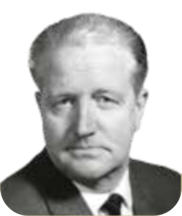The following is the entry for Richard Seabrook taken from Wikipedia.
Richard B. Seabrook was a British trade unionist and politician.
Seabrook grew up in Chelmsford, and worked repairing shoes for the Chelmsford Star Co-operative Society. He joined the
National Union of Distributive and Allied Workers (NUDAW) in 1926, and in 1931 he also joined the Communist Party of Great
Britain (CPGB). He was highly active in the party and the associated National Unemployed Workers' Movement. With his brother,
Alfred, in 1932, he led five hundred unemployed workers invading the Shire Hall chamber. Also with Alfred, he revived Chelmsford
Trades Council in 1932, it having been dormant for several years.
In 1937, Seabrook began working full-time for NUDAW as an area organiser. Ten years later, NUDAW became part of the new
Union of Shop, Distributive and Allied Workers (USDAW). Seabrook remained an area organiser, but was relocated to Norwich. He
remained active in the CPGB, serving as district chairman and treasurer during the early 1950s.
Seabrook was elected to the executive council of USDAW in 1957. When union president Walter Padley was made a government minister in 1964, Seabrook won
the election to succeed him, but he then lost the regularly scheduled election the following year, defeated by Rodney Hanes. In 1967, there was a further
presidential election, and Seabrook won the position back, on this occasion serving until defeated by Jim D. Hughes in 1973.
Seabrook opposed the Soviet invasion of Hungary in 1956, and resigned from the CPGB, later becoming associated with the Chartist group. Despite not being a
member of Norwich City Council, in 1972/73 he served as Lord Mayor of Norwich, the last non-council member to hold the post. He was described by Patrick
Palgrave-Moore as "one of the most controversial figures in recent times to hold office".
The following biography comes from a website run by Graham Stevenson a trade unionist, member of the Communist Party of Britain and the
Convenor of the Communist History Group. It was written by Michael Walker
Dick Seabrook
Richard "Dick" Seabrook joined the Communist Party in 1931. He and his brother Alfred were both active in the Chelmsford Communist Party probably from its
conception around 1933. Dick was a boot and shoe repairer with Chelmsford Co-op.
Both would later hold elevated positions in the shop workers union USDAW, Dick as a NUDAW Area Organiser from 1937 and later as the President of the
enlarged and merged shop workers’ union, USDAW, and Alfred as a National Executive Committee member.
Between the wars, Chelmsford suffered terribly from high unemployment, and the Communist Party threw itself wholeheartedly into work with the local
National Unemployed Workers Movement to highlight the plight of the unemployed in the town. In October 1932, an invasion of the Council chamber at Shire
Hall, Chelmsford, by 500 unemployed workers was led by the brothers.
The Party supported the Tyne-side unemployed marchers when they visited the town in November 1932. Key local organisers liaising with the march as it
passed through town were R C Rushden secretary of the Trades Council and Maurice Cornforth (see separate entry) for the Chelmsford Communist Party.
The Chelmsford Party reprised the sterling efforts it undertook for other unemployed marches in 1934 and 1936.
But in 1936, the Party was now highly active in turning back the tide of fascism and in particular a British Union of Fascist meeting held in Chelmsford in
November that year.
During the Second World War, Dan Parish of 48 West Avenue was elected Branch Secretary of the Chelmsford Communist Party, later succeeded by David Lewis
of 77 Bishop Road. Lewis was also the delegate to the 1944 Communist Party Congress.
Other key Communist families in the town included the Olives, a Jewish family, and Ken Saunders, who helped Harold Quinton (see separate entry) get elected
as a Communist councillor in Braintree.
Like all Communist Party branches, the Chelmsford Party was very busy during the war building support for a People's War and for a Second Front. Communist
Party General Secretary Harry Pollitt spoke to huge crowds in Chelmsford in November 1941 and October 1945.
The Chelmsford Communist Party also helped in the famous Maldon By-election of 1942 when "Left Front" and socialist/communist candidate Tom Driberg MP
was elected.
Other speakers at Communist party meetings in Chelmsford during the war included Paxton Chadwick (see separate entry), Harry Self (a left-wing Labour Party
from Stowmarket), and the Reverend Jack Puterill.
At the end of the war, Ernest Millington was elected for the Commonwealth Party as MP for Chelmsford and Labour won control of Chelmsford Council and
Essex County Council
In 1946 The Communist Party was active in trying to secure more homes in Chelmsford families and returning soldiers and they led a campaign to highlight
their plight including the squatting of local houses as part of the national squatters’ movement.
Dick was Party District Chairman and District Treasurer during the 1950s and secretary of the local Trades Council.
He was elected national President of USDAW in 1965. Re-elected in 1967, he held this role for another six years.








